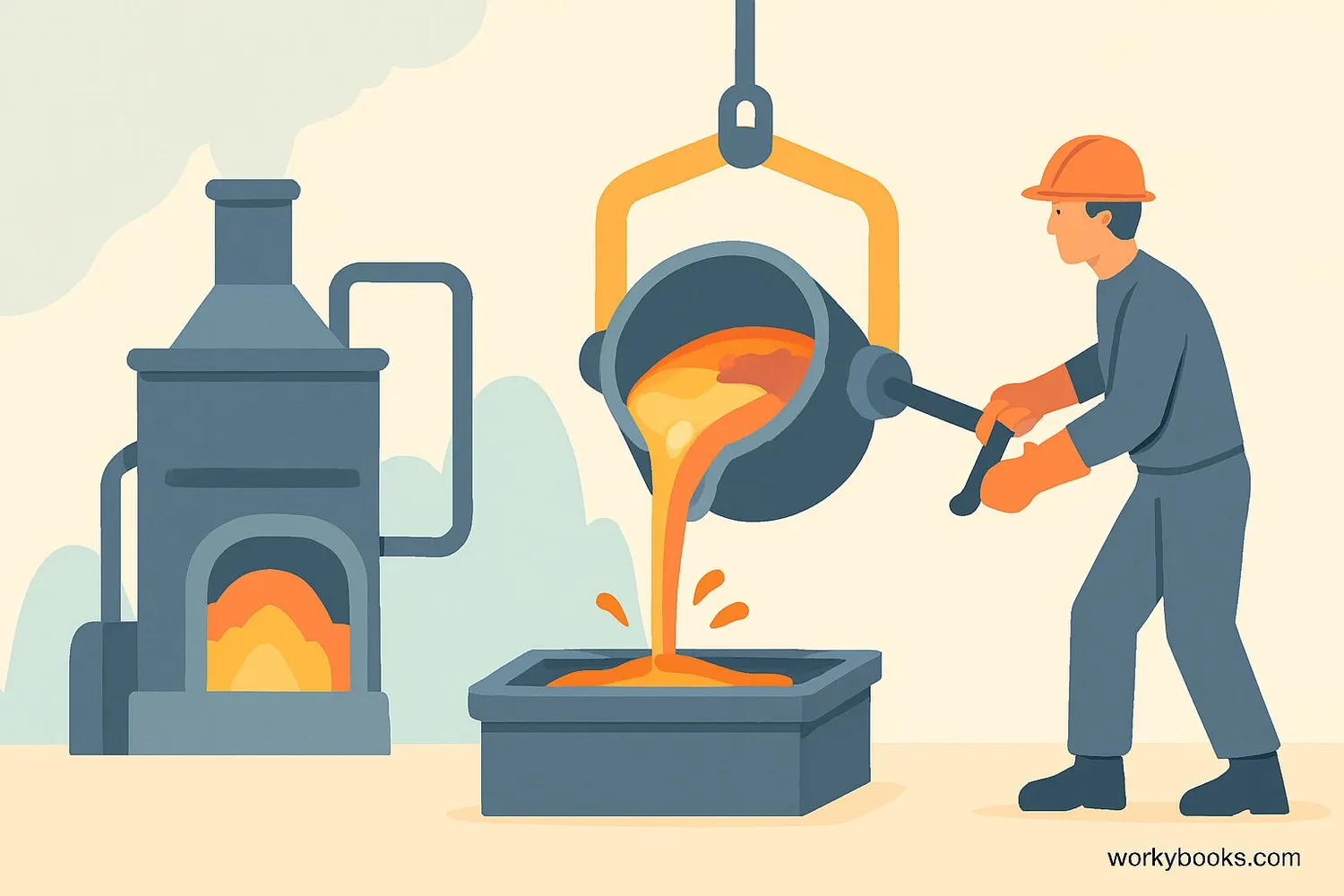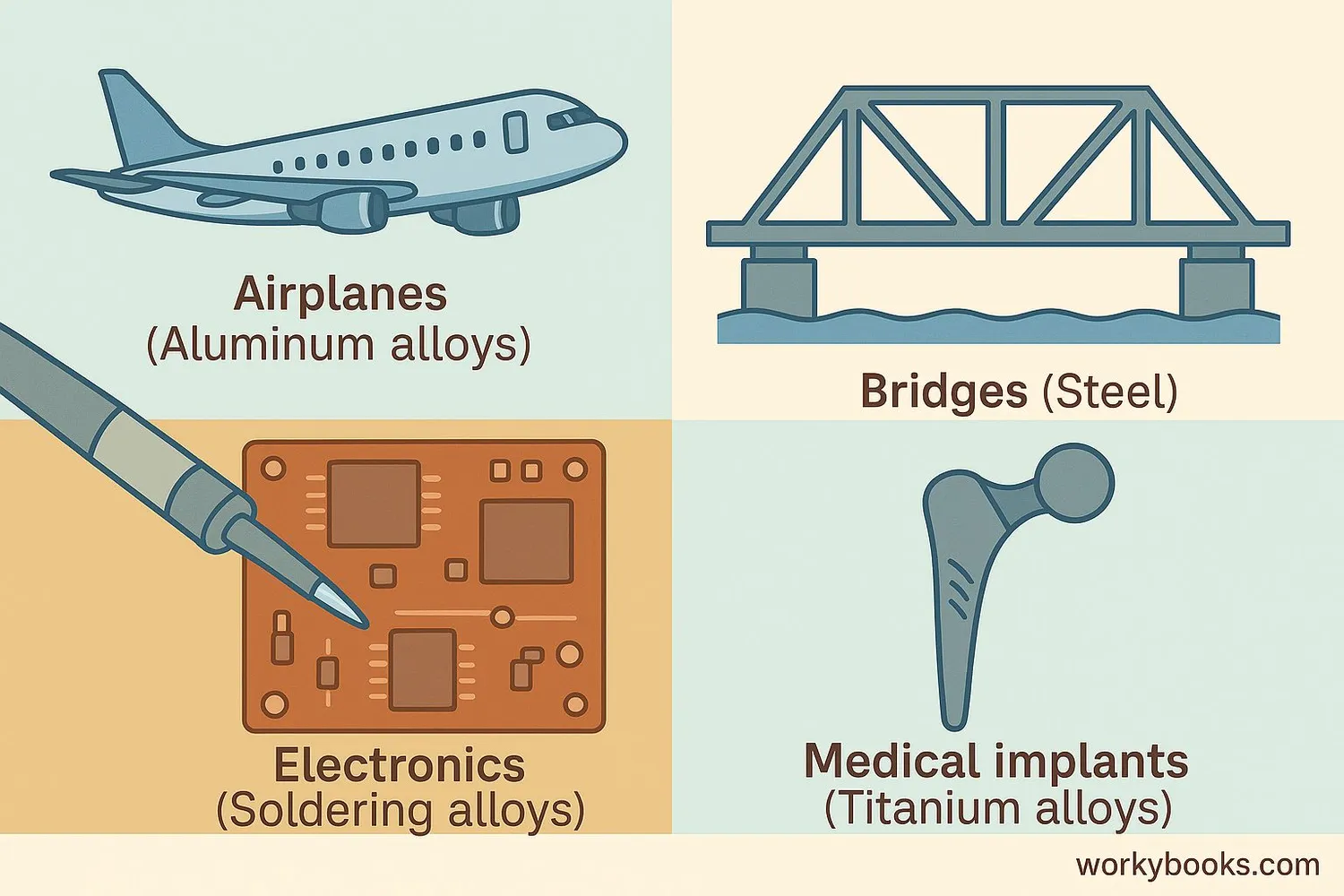Alloys - Definition, Examples, Quiz, FAQ, Trivia
Discover how mixing metals creates amazing new materials!
What is an Alloy?

An alloy is a special mixture of two or more elements, where at least one of them is a metal. Think of it like making a special recipe - by combining different metals, we can create new materials that have better properties than the original metals alone!
Alloys are created to improve metal properties like strength, hardness, or resistance to rust. Some common examples you might know include bronze (copper + tin), steel (iron + carbon), and brass (copper + zinc). These materials are all around us in everyday objects!
Did You Know?
Pure gold is too soft for jewelry, so we mix it with other metals like copper or silver to make it stronger. That's why gold jewelry is actually an alloy!
How Alloys Are Made

Making alloys is a fascinating process called metallurgy - the science of working with metals. Here's how scientists and engineers create alloys:
Select Metals
Choose which metals to combine based on desired properties
Measure Precisely
Measure exact amounts of each metal
Melt Together
Heat metals until molten and mix thoroughly
Cool & Solidify
Pour mixture into molds and let cool
Shape & Finish
Form the alloy into useful products
The key to creating a good alloy is controlling the process very carefully. The temperature, mixing time, and cooling rate all affect the final properties of the alloy. This is why material science is such an important field!
Alloy Fact!
Some alloys like Nitinol can "remember" their original shape after being bent. This shape-memory alloy is used in eyeglass frames and medical devices!
Why Alloys Are Important

Alloys are incredibly important in our modern world! Here's why we use them everywhere:
Strength & Durability
Alloys are stronger and last longer than pure metals
Heat Resistance
Special alloys withstand extreme temperatures
Corrosion Resistance
Alloys resist rust and corrosion better than pure metals
Without alloys, we wouldn't have:
• Lightweight airplanes (aluminum alloys)
• Strong bridges and buildings (steel)
• Efficient electronics (soldering alloys)
• Medical implants that work with our bodies (titanium alloys)
Alloys allow engineers to create materials with exactly the right properties for specific jobs, making our modern world possible!
Alloy Knowledge Quiz
Test what you've learned about alloys with this quiz! Answer all 5 questions to see how much you know.
Frequently Asked Questions
Here are answers to common questions about alloys:
Alloy Trivia
Discover some amazing facts about alloys!
Ancient Alloys
The first alloy humans created was bronze over 5,000 years ago! This important development marked the beginning of the Bronze Age, when people made tools and weapons from bronze instead of stone.
Flying High
Modern airplanes are about 80% aluminum alloys! These special mixtures are strong but lightweight, helping planes carry heavy loads while using less fuel. Some jets even contain titanium alloys that withstand extreme temperatures.
Space Age Alloys
Special alloys developed for space travel can withstand temperatures from -200°C to over 1,000°C! These materials protect spacecraft during re-entry into Earth's atmosphere when friction creates intense heat.
Shape Memory Alloys
Some alloys like Nitinol can "remember" their original shape! Bend them, then heat them up, and they return to their original form. These smart alloys are used in eyeglass frames, medical stents, and even robotics!


